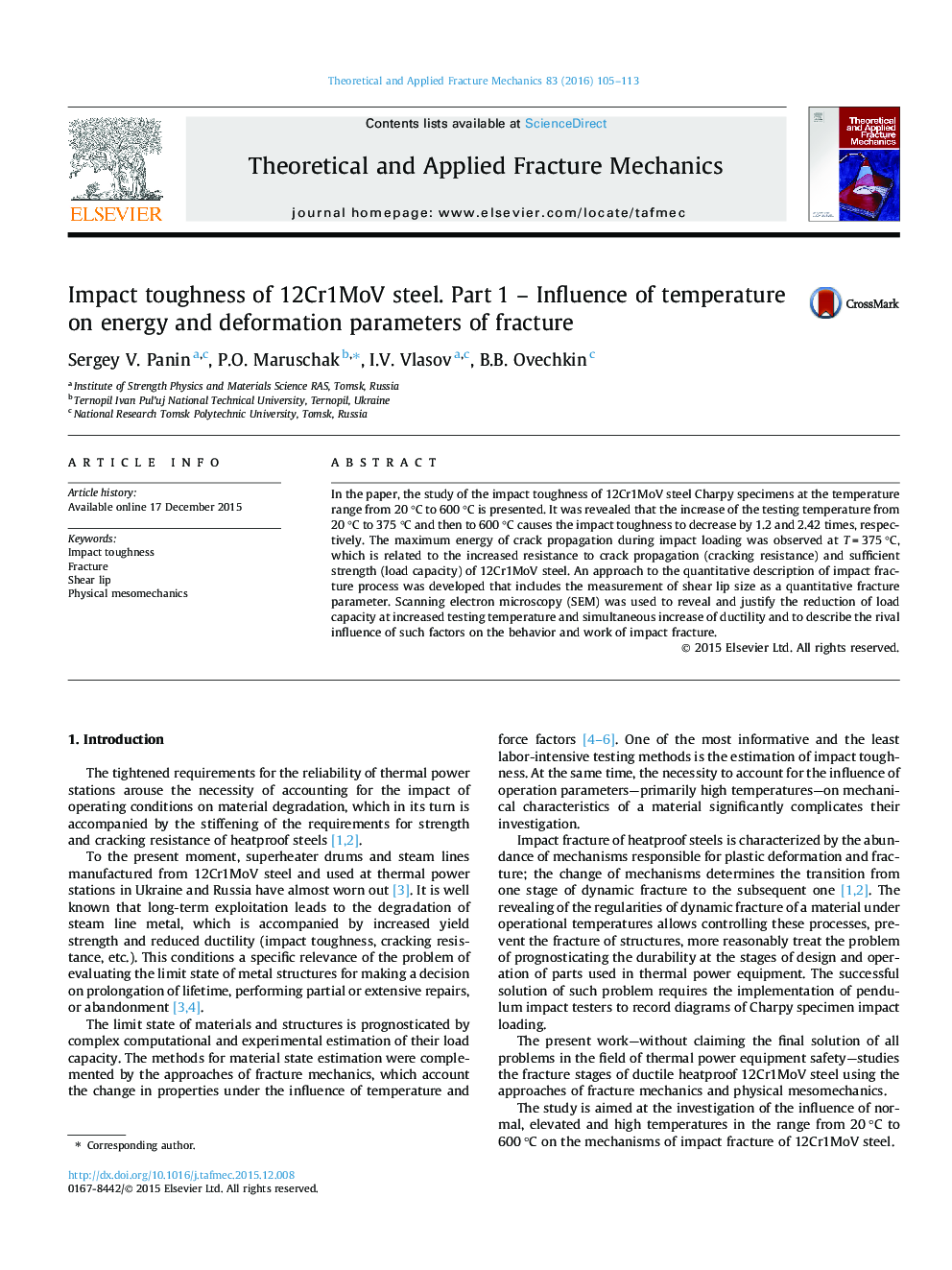| Article ID | Journal | Published Year | Pages | File Type |
|---|---|---|---|---|
| 804680 | Theoretical and Applied Fracture Mechanics | 2016 | 9 Pages |
•The stages of impact deformation and fracture processes in 12Cr1MoV steel were studied.•Shear lips as a quantitative fracture parameter was used.•There are temperature range from 20 °C to 600 °C studies and its effect on the impact strength.•The tear dimples were used as indicators of fracture mechanisms.
In the paper, the study of the impact toughness of 12Cr1MoV steel Charpy specimens at the temperature range from 20 °C to 600 °C is presented. It was revealed that the increase of the testing temperature from 20 °C to 375 °C and then to 600 °C causes the impact toughness to decrease by 1.2 and 2.42 times, respectively. The maximum energy of crack propagation during impact loading was observed at T = 375 °C, which is related to the increased resistance to crack propagation (cracking resistance) and sufficient strength (load capacity) of 12Cr1MoV steel. An approach to the quantitative description of impact fracture process was developed that includes the measurement of shear lip size as a quantitative fracture parameter. Scanning electron microscopy (SEM) was used to reveal and justify the reduction of load capacity at increased testing temperature and simultaneous increase of ductility and to describe the rival influence of such factors on the behavior and work of impact fracture.
